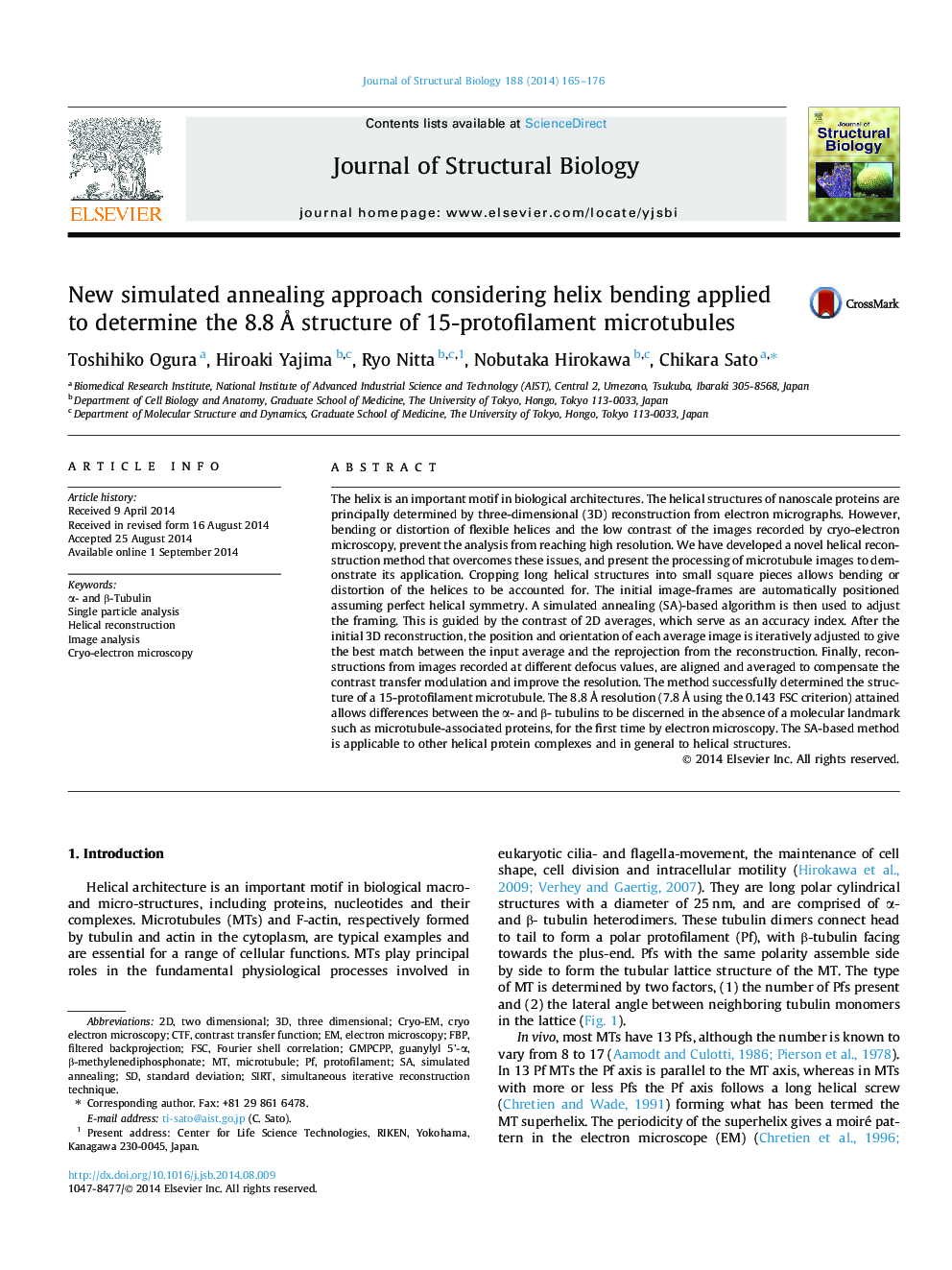| Article ID | Journal | Published Year | Pages | File Type |
|---|---|---|---|---|
| 2828491 | Journal of Structural Biology | 2014 | 12 Pages |
The helix is an important motif in biological architectures. The helical structures of nanoscale proteins are principally determined by three-dimensional (3D) reconstruction from electron micrographs. However, bending or distortion of flexible helices and the low contrast of the images recorded by cryo-electron microscopy, prevent the analysis from reaching high resolution. We have developed a novel helical reconstruction method that overcomes these issues, and present the processing of microtubule images to demonstrate its application. Cropping long helical structures into small square pieces allows bending or distortion of the helices to be accounted for. The initial image-frames are automatically positioned assuming perfect helical symmetry. A simulated annealing (SA)-based algorithm is then used to adjust the framing. This is guided by the contrast of 2D averages, which serve as an accuracy index. After the initial 3D reconstruction, the position and orientation of each average image is iteratively adjusted to give the best match between the input average and the reprojection from the reconstruction. Finally, reconstructions from images recorded at different defocus values, are aligned and averaged to compensate the contrast transfer modulation and improve the resolution. The method successfully determined the structure of a 15-protofilament microtubule. The 8.8 Å resolution (7.8 Å using the 0.143 FSC criterion) attained allows differences between the α- and β- tubulins to be discerned in the absence of a molecular landmark such as microtubule-associated proteins, for the first time by electron microscopy. The SA-based method is applicable to other helical protein complexes and in general to helical structures.
